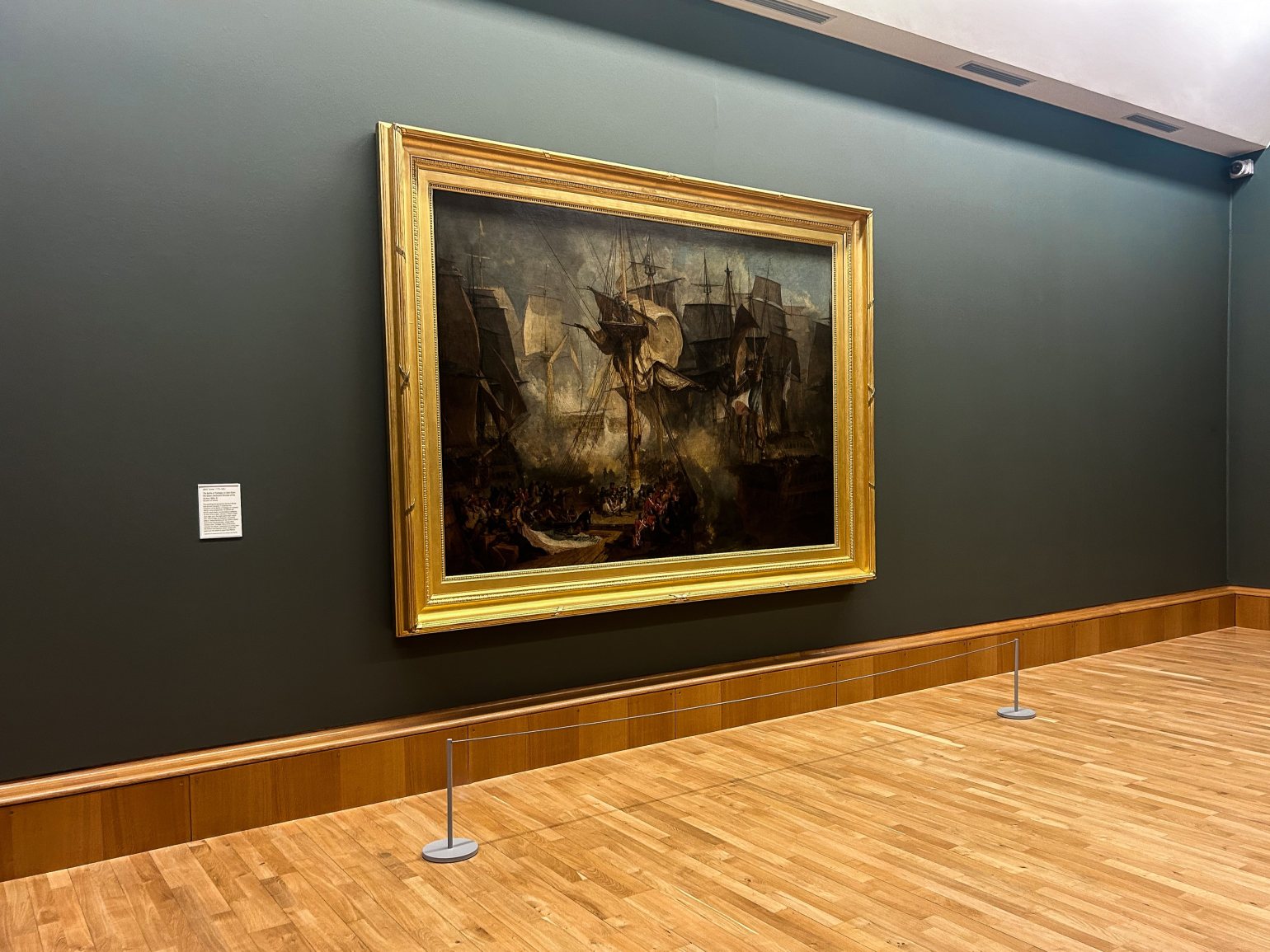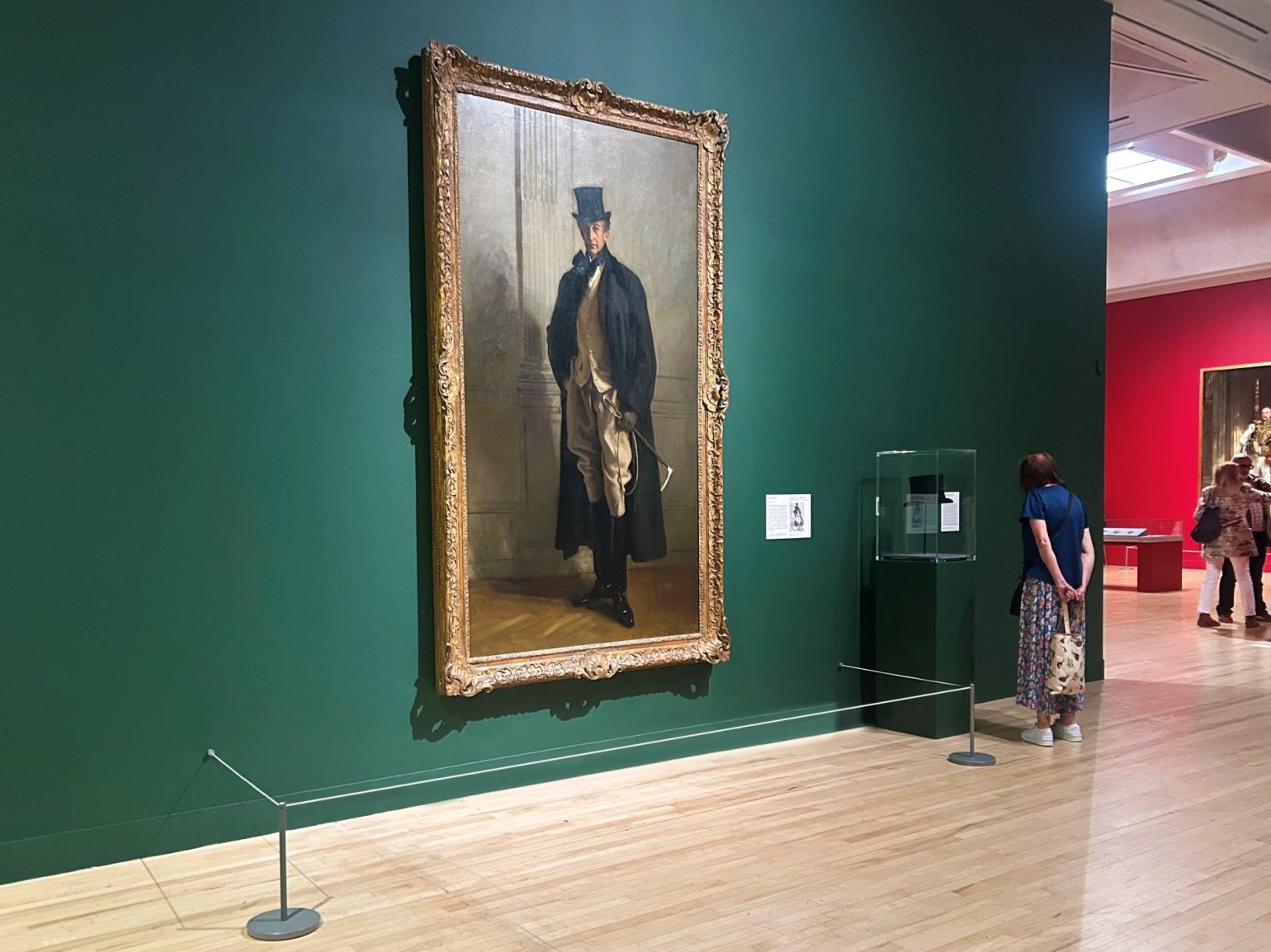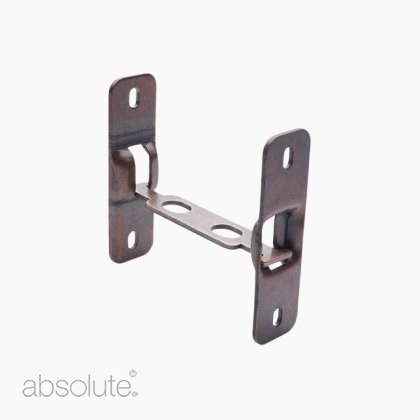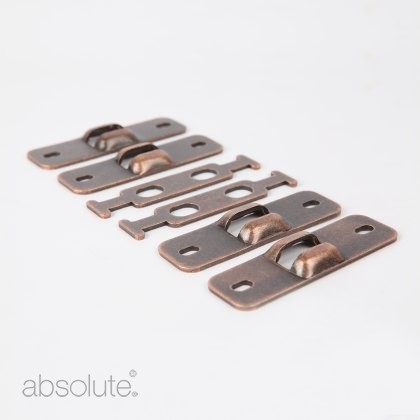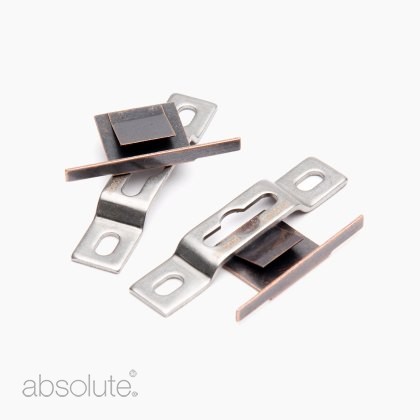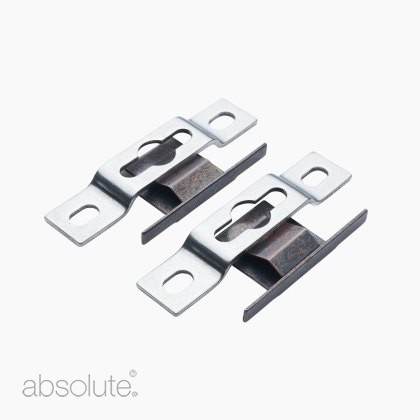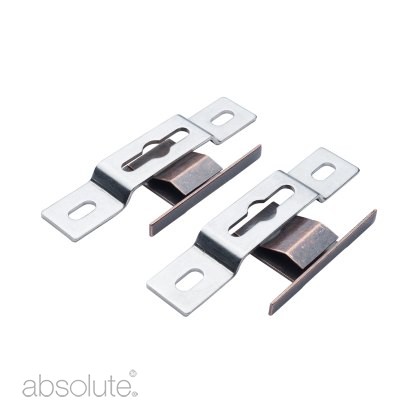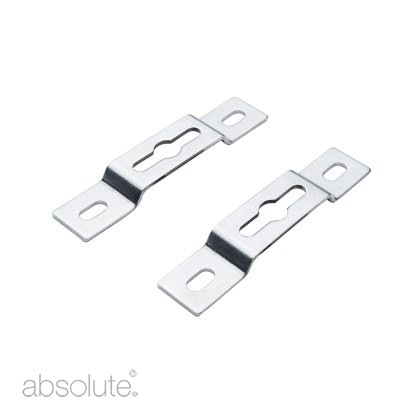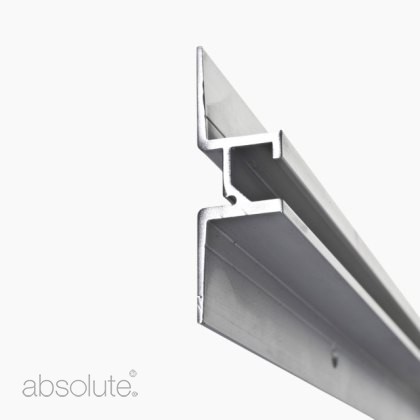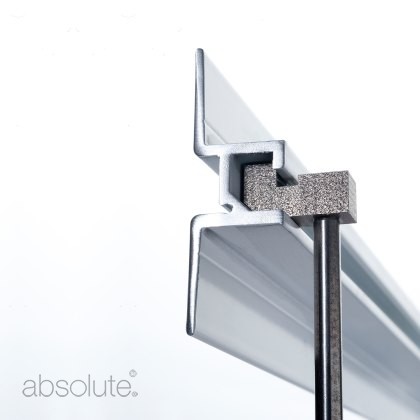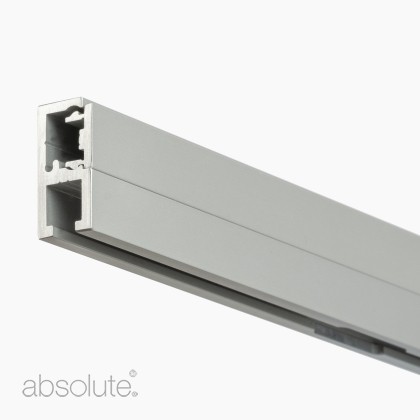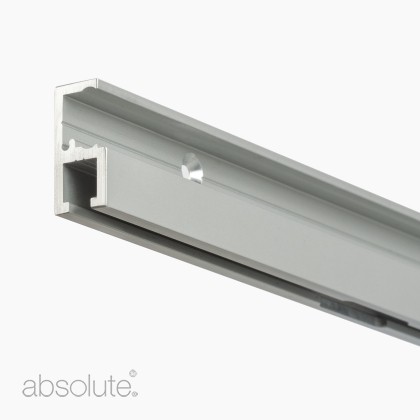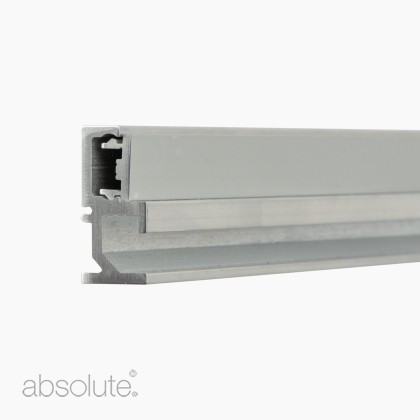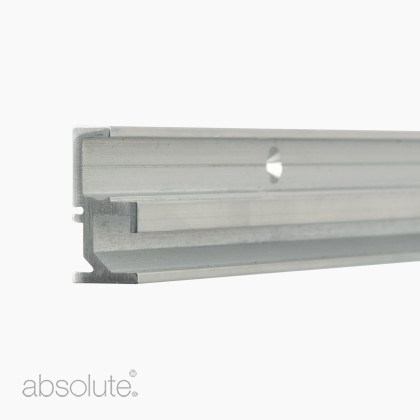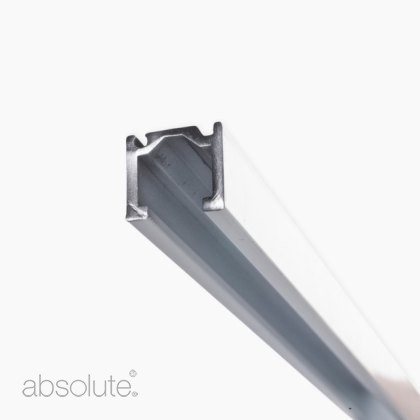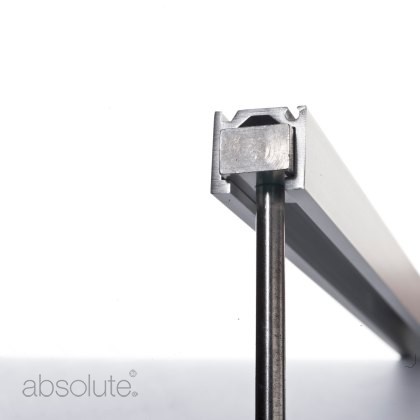How to Hang Heavy, Large Artworks in Your Gallery
![]()
Summary
Hanging large or heavy artworks demands careful consideration of both structure and sensitivity. From understanding an artwork’s weight, frame type, and conservation needs, to assessing wall strength and choosing the right hanging system, every detail contributes to a safe and professional display. This guide explains how systems like Absolute’s Ryman and Link Hangers, along with track-based solutions, allow galleries to securely install valuable paintings while preserving the integrity of both artwork and wall.
Despite its modest dimensions – roughly 17 by 15 inches – Vermeer’s Girl with a Pearl Earring has become one of the most recognisable and studied paintings in the history of art.
On the other end of the scale, Delacroix’s Liberty Leading the People of 1830, is a work over 8 feet high and more than 10 feet wide; a painting that resonates immediate power, as much through political symbolism as the sheer physical presence it commands in its exhibition space at the Louvre in Paris.
Art, indeed, comes in all shapes and sizes – and grand scale alone is not an indication of cultural value. But, for those gallery curators and technicians charged with the secure hanging of artworks, size and weight do matter.
Heavy, Large artworks introduce a very specific set of challenges – both structural and aesthetic. Today’s guide looks at those risks and responsibilities involved, and how systems like the Ryman Hanger and Link Hanger facilitate professional-grade installations without disrupting the visual experience for visitors.
Technical Demands of Heavy, Large Artworks
Physical weight should factor prominently in the decision-making process when installing any artwork, but particularly one which is large or of high value. As one might expect, a hanging system unable to withstand the payload of a heavy painting can result in long-term stress on the frame or wall – or worse, an unstable installation that shifts or even dislodges over time.
When assessing an artwork before hanging, the following factors must be considered:
- Overall dimensions
- Overall weight
- Frame style – depth and material (e.g. flat, rebated)
- Frame condition and Conservation sensitivity
And in addition, the following factors must be considered of the wall or display surface:
- Wall type and structure
- Preservation requirements
There are further considerations that also need attention, such as lighting, security, humidity/temperature, each artwork’s placement within the curatorial narrative, etc. But for today’s article, we are going to focus on the aspects that relate to size, weight and appropriate hanger choice, and how to hang based on those factors.
![]()
Consideration 1: Overall Weight
Knowing the weight of the artwork, including frame and glazing, is of vital importance to ensure if can be hung safely and securely. If an artwork is hung from hangers not designed to cope with the load in question, it could lead to failure and ultimately damage to the artwork, not to mention potential harm to visitors.
Here is a simple guide to Absolute’s hangers and their safe load maximums (our hangers and track systems are capable of carrying even heavier artworks with the right installation modifications - please contact us for advice)*:
Hanger
Maximum Artwork Weight*
Ryman Hanger Small
25kg
Ryman Hanger Large
75kg
Ryman Hanger Extended
150kg
Link Hanger
150kg
Chain Hanger
30kg
*Important Note: The Hanger Maximum Weight is only as reliable as the wall structure it is fixed too. If the wall structure is not suitable to support the load, the artwork is still at risk. See our section bellow of “Requirements of the Wall Structure” for further information.
The size and condition of the frame, the material of the wall, and the presence of glass or glazing panels all influence the final choice of hanging system. The Ryman system is available in three distinct sizes, making it easier for curators to match the hardware to the specific weight demands of each piece.
The smallest version – tested for weights up to 25kg – is suited to lightweight artwork, from small-to-medium-sized watercolours and etchings to narrow-framed paintings. Its slim width allows it to sit behind even the most modest moulding without protrusion.
For heavier, more substantial works, the large Ryman hanger accommodates most medium-to-large framed pieces found in permanent or rotating collections. The extended Ryman Hanger, meanwhile, is the most robust option in the series. With a weight capacity of up to 150kg, the hanging system features a wider plate and extra fixing points that provide greater strength and stability. It is ideal for artworks that include glazing, thicker frames, or additional depth.
In each case, the mounting plate is designed to create a tight, near-flush connection to the wall, which improves stability and, from an aesthetic point of view, reduces the likelihood of shadows or visible gaps behind the frame, helping maintain a clean and uniform gallery wall. In spaces where multiple pieces are installed side by side, that consistency becomes part of the visual language of the room.
![]()
Consideration 2: Overall Dimensions
For a particularly large, heavy frame, it is often advisable to have a secondary support in place, to provide a failsafe and reduce the pressure on the hangers themselves and reduce strain from the corner joints. In this instance, our L Bracket provides robust support to aid the hanger being used (not instead of).
Consideration 3: Frame Style
While the Ryman Hanger suits most modern and flat-backed frames, there are situations where a secondary option is better suited. Older works with deep, rebated frames – such as Victorian oil paintings or classical portraits – often present a gap between the frame and the wall that needs to be bridged. Attempting to use a flush-fitted hanger in these cases can compromise both security and visual balance.
The Link Hanger has been designed to address this very specific challenge, providing a strong connection between the frame and wall while automatically accommodating the depth of traditional or uneven frames. It’s capable of supporting artworks up to 150 kg, with the same clean finish once installed. Like the Ryman, it sits neatly hidden behind the frame, and the bronzed steel surface blends into the shadow line, staying visually unobtrusive.
The Link Hanger also includes locking mechanisms that engage once the frame is levelled and secured. It’s those kinds of mechanical features that reduce the risk of removal and keep the frame in its intended position over time, even in spaces with variable temperature or humidity. For these reasons the Link Hanger is regularly specified and used by institutions for heritage or period displays.
![]()
Consideration 4: Frame Condition and Conservation Sensitivity
Before installing any large or valuable artwork, it’s essential to assess the condition of its frame and the sensitivity of its materials. Heavy paintings often rely on their frames to bear significant structural stress, yet older or ornate frames may have weakened joints, brittle timber, or compromised fixings that make them unsuitable for direct hanging. A thorough inspection ensures that any strain is safely transferred through the strongest parts of the frame or supporting structure.
Conservation sensitivity should also guide your choice of hardware and method — for instance, avoiding multiple invasive screws or nails in favour of a single hanger that can be used for display, transport and storage will cause minimum damage to the frame, protecting both the frame and the artwork itself. In this instance, the Ryman Hanger is a great choice. It’s built in adjustability also negates the need for re-screwing when trying to get the painting straight.
For particularly delicate or high-value pieces, always consult a conservator before fitting or installing hanging hardware, ensuring the display method upholds the long-term stability and preservation of the work.
Requirements of the Wall Structure
While the artwork and its frame determine how the load is transferred, the wall structure itself ultimately bears that load — making it an equally critical element of any secure hanging installation. A system is only ever as strong as the surface it’s fixed to. Understanding what lies behind the paint or panelling is therefore vital before committing to any fixings.
Consideration 5: Wall Type and Structure
Different exhibition settings bring unique demands. A permanent gallery wall constructed from masonry or blockwork offers far greater load-bearing capacity than a temporary display partition or stud wall. Museums may also use modular walling systems, composite panels, or moveable partitions that require specific anchor types and weight limits.
For heavier artworks, we always advise that our track systems and hangers are strong, but only as strong as the wall sub-structure they are fixed to. To support individual artworks weighing up to the maximums our hangers and tracks are advised to hold, all fixings must be into a hardwood or plywood structure within the wall. In addition, an individual artwork must be hung on two suspended supports, allowing the weight to be equally distributed between the supports, effectively making the point load on each hanger half the advertised total artwork weight.
Before installation, always confirm the wall type, it’s weight bearing capacity and ensure that both the fixings and the hanger are compatible. For heavy or valuable works, it’s best practice to engage a technician or structural specialist to verify that the wall can safely take the combined load of the artwork and fittings.
![]()
Consideration 6: Preservation Requirements
In heritage or conservation-sensitive settings, drilling directly into the wall may be discouraged or even prohibited. In these cases, a track-based hanging system offers an ideal solution. By transferring the weight of each artwork to a structural rail rather than the wall surface itself, track systems protect historic plaster, panelling, or delicate finishes from repeated intervention.
Once installed, they provide a versatile, reversible method for displaying works of varying sizes and weights without compromising wall integrity. Tracks can also support multiple artworks and be adapted to suit future exhibitions — an especially valuable feature in galleries that refresh their displays frequently. When used with secure, weight-rated fittings such as Ryman Hangers, track systems allow curators to balance preservation with professional display standards, maintaining both safety and flexibility over time.
Conclusion
In gallery environments where wall conditions, conservation requirements, and display standards all intersect, the right hanging system must literally carry that weight of responsibility. Protecting the work and allowing for controlled, repeatable installation over time.
The Ryman Hanger and Link Hanger continue to be used in leading institutions worldwide because they meet those demands without compromise — making them a dependable choice for any gallery handling substantial or high-value artworks. In addition, when preservation or flexibility needs demand it, our track systems have proven the perfect solution, capable of supporting large, heavy artworks without having to fix pieces directly to the wall.
If you’d like to find out more about our art hanging systems, and how they might suit your heavy art hanging needs, please do get in touch.
Browse Hangers
Link Hanger (Pair)€32.39 (ex VAT)Ryman Artwork Hanger - High Security Setfrom €17.78 (ex VAT)Ryman Artwork Hanger - Secure Setfrom €13.97 (ex VAT)Ryman Artwork Hanger - Standard Setfrom €6.99 (ex VAT)Browse Track
Flush Mount Track (Rail) Art Hanging Systemfrom €146.05 (ex VAT)H Track (Rail) Art Hanging Systemfrom €111.76 (ex VAT)T Track (Rail) Art Hanging Systemfrom €129.54 (ex VAT)C Track (Rail) Art Hanging Systemfrom €64.77 (ex VAT)Need Advice? We're Here to Help.
Our professional, experienced team are here to help and offer advice relating to your specific artworks or installation setting. Please contact us for further assistance.
Contact Us-
Posted by Jade Turner
16th October 2025

